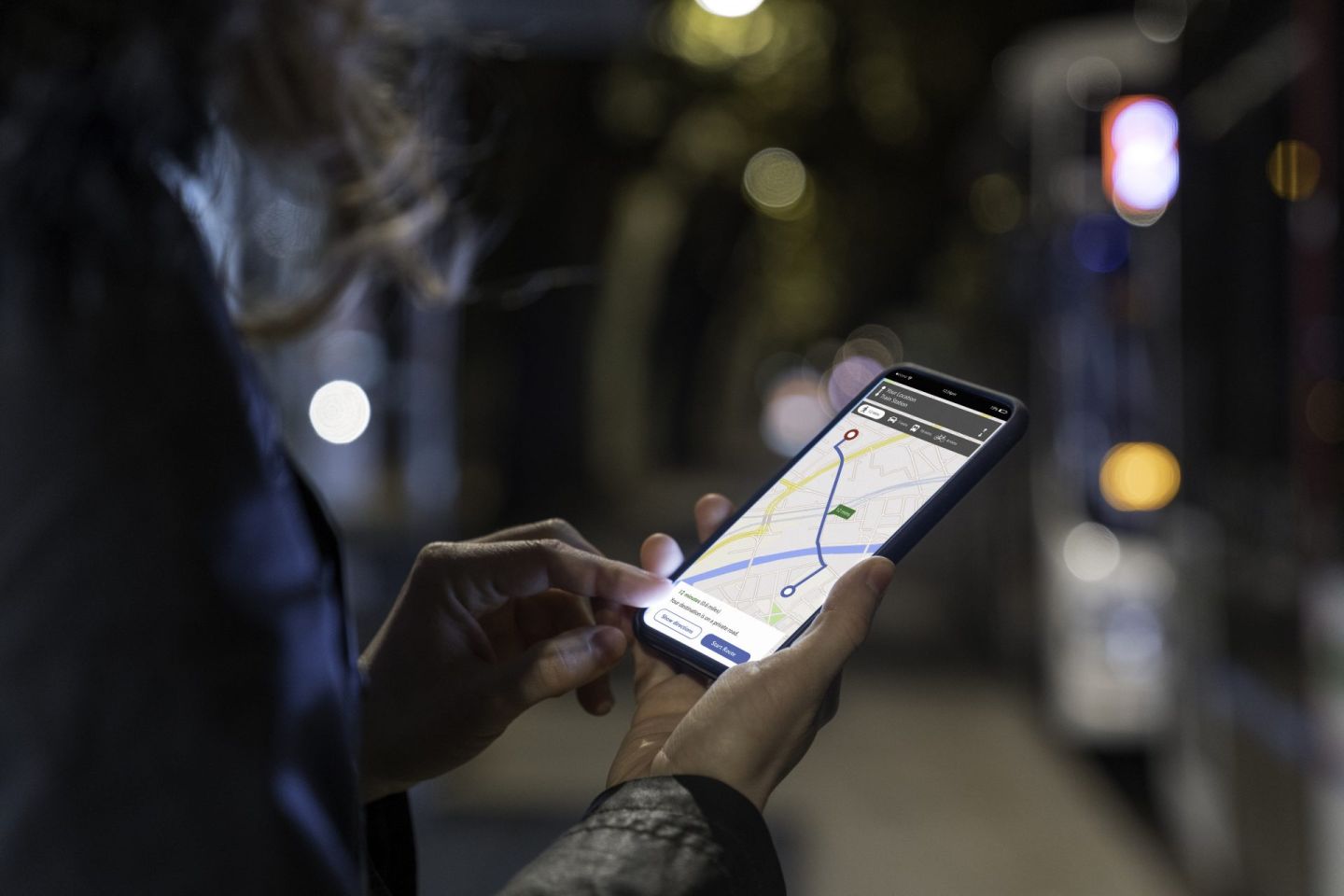The future of mobility: Mastering the mobility revolution with Mobility 4.0
Published May 16, 2024
- Travel, Transport & Logistics

Mobility is currently undergoing its greatest transformation: the mobility revolution. CO2 emissions, the impact on climate change, and the scarcity of resources are important reasons why the mobility of the future must be sustainable, efficient, and safe. To get there, we mainly need data, digital transformation, and connected systems – in short: Mobility 4.0.
For mobility players, this means making the leap from Mobility 1.0 to Mobility 4.0 – and doing so in the shortest possible time. Because a successful mobility turnaround has no time for anything in between.
What does Mobility 4.0 look like? What are the digital mobility solutions of the future? And how do companies approach this change strategically and at a rapid pace? Three levers for the future show the way.

Lever for the future 1
Big data becomes smart data
Mobility players operate in the data ecosystem.
Today: Digital transformation in the mobility industry needs data, but also the possibility to use it efficiently and effectively. The data itself is not the problem; it is already available in infinite quantities from a wide variety of sources. What often stands in the way of turning it big data into smart data is the lack of standardized interfaces and data formats. This makes it difficult to achieve compatibility and cooperation difficult and to connect the different services, players, and data sources.
Tomorrow: Mobility 4.0 is characterized by high-quality data from different mobility players and service providers that is easily accessible and can be used effectively. Standardized interfaces, data formats and data platforms allow for easy access and integration to facilitate the mobility turnaround. A data ecosystem forms the framework for the mobility players of the future. There is a common understanding of data governance that creates trust and increases the willingness to share data with each other. Artificial intelligence (AI) forms the basis for autonomous transport systems, forecasts of mobility demand, and automated planning and billing processes. Companies employ data scientists who not only collect data, but also analyze it for specific purposes and derive measures from their findings. Technological approaches such as GAIA-X, the Mobility Data Space, and a number of other data platforms are part of their daily routine.
Biggest opportunities
- The mobility solutions needed for Mobility 4.0 can only be built if data competence is in place. Now is still the chance to become a data-driven organization and build up the necessary competence, thus positioning the organization for the future instead of being driven ahead by developments.
- Innovations around vehicles, infrastructures in the traffic environment, but also the availability of further sensor data enable new business models.
- Companies increase their efficiency and reduce resource requirements.
- Cross-modal mobility services can be operated in a customer-oriented and economical manner, both in rural and urban areas.
Biggest risks
- Capacity building: Despite existing data sources (even if the potential is certainly not yet exhausted), their potential is not exploited because often the focus is simply on the use of the data, but not on the goal that is actually to be achieved, e.g. sustainability, zero emissions, optimized processes. Setting the right goal while being smart with data is the big challenge. Because the best use case can stumble and fail over data protection, security or an unstructured handling of data.

Lever for the future 2
Digitalization means transformation
Mobility players as drivers of the process.
Today: The potential of digital technologies is far from exhausted, especially in mobility. Today, many people don’t see digital transformation for what it really is. It does not mean the digitization of formerly analog processes. Because when you digitize a poorly designed analog process, what you get is a poorly designed digital process. Digital transformation is often not thought all the way through – as a transformation of the organization as a whole. However, there is no lack of ideas. Today, there are already countless applications, apps, offering, and complementary services available to customers. However, they are being pushed too much as isolated projects rather than an integrated approach.
Tomorrow: The future of mobility is digital and analog. Both worlds are a reflection of the other. Mobility 4.0 is smart, multimodal, seamless and, driven by demand. Mobility players have created innovative, digitally enhanced processes and solutions that have been thought through as such and adapted to the new requirements of travelers from day one. Customers and their mobility requirements are front and center. The various offerings and services are interconnected and deliver a seamless travel experience. Travelers can get the information they need, book and pay digitally, all through a one-stop app that covers every aspect of their journey – regardless of whether they choose public or private transport. Throughout the process, travelers not only receive real-time information about travel disruptions or changes and possible alternatives beforehand but throughout the entire travel chain – giving them a personalized, multimodal real-time travel guide. These digital mobility solutions are not an end in themselves, but always pursue the goal of making processes and services more customer-centric and sustainable.
Biggest opportunities
- For mobility players: Successful digitization enables them to achieve the necessary efficiency, sustainability, and cost-effectiveness that will secure their competitiveness or the provision of services of general interest in the future.
- For travelers: Digital offers and solutions make mobility more attractive, more demand-oriented, and more flexible. The simple use and combination of (alternative) offers and means of transport are the basis for inter- and multimodal mobility.
- For the environment: Digital solutions help reduce emissions and optimize traffic flow, capacities, and mobility offerings. In this way, they relieve the burden on the environment, resources, cities and infrastructures. Seamless, inter- and multimodal travel experiences could replace the car as the No. 1 means of transportation in the future – an important step toward achieving global sustainability goals and the mobility revolution.
Biggest risks
- The requirement is radical transformation: rethinking at the technological, infrastructural, legal and societal levels is needed for digitization to unleash its full potential.

Lever for the future 3
Beyond cars and trains
Mobility is becoming a connected ecosystem.
Today: Mobility today is mainly thought of in terms of means of transport and small-scale sectors: automobile, rail, public transport, ride sharing, cycling, or walking. This has already given rise to lighthouse projects that create local and regional added value. However, in order to advance the mobility transition as a whole and across all sectors and to meet the mobility needs of the future, we need to connect the ecosystem as a whole.
Tomorrow: Mobility is a cross-sector ecosystem of players, services, and data. The end-to-end digitalized connection of public transport services and the private mobility services in integrated mobility platforms enable the smart integration of mobility services. Mobility 4.0 connects players and their services into a multi- and intermodal service. Autonomous and connected driving, mobility platforms, intermodal apps and booking options along with new, platform-based business models are the standard. Customers have a single app through which they can see and book travel options from public transport providers, but also for bus and long-distance transport and from other private providers. On the way, they receive real-time updates and can switch to alternatives.
Biggest opportunities
- Mobility becomes more efficient because it is thought of as a whole and not just individual means of transport are optimized.
- Mobility is becoming more customer-centric, flexible and sustainable.
- Public transport is gaining new customers.
- Travelers can choose between mobility offers and prices, depending on their situation and needs.
- Mobility providers have the opportunity for new business models and revenue streams.
Biggest risks
- Radical rethinking: Only when mobility players think in terms of the global ecosystem can they create solutions that are sustainable, efficient, and safe through networking and digitization and satisfy tomorrow’s travelers.
- Cooperation: All players in the mobility industry, as well as policymakers, must play their part. To enable Seamless Mobility, networking between all players is necessary. This requires trust – for example, through a common governance structure or through legal frameworks that create the conditions for effective cooperation and ensure that all players get on board.
A roadmap for the mobility of the future
Our destination for the future: Mobility 4.0. the way there? Different for each company, but with several common steps when you look at the overall picture. Five central fields of action pave the way to the future of mobility. What is important here is that need to be integrated to truly unfold their potential. The particular focus of each company, however, depends on where they start.
Mobility players of the future put their customers at the center of everything they do. To do this, they use intelligent, data-driven mobility solutions. People, vehicles, and infrastructures are connected to exchange information and deliver seamless travel experiences. Multi- and intermodal mobility is as easy, convenient, and flexible for travelers as using their own car.
Successful digital transformation needs data. The collection and intelligent use of this data is therefore the central lever for the leap towards Mobility 4.0 because it is only with the help of data that services can be connected, customer needs and wishes comprehensively understood, and smart offers made. The mobility players of the future have enormous competencies in this area, also with regard to the major challenges such as data protection and security.
Economy and efficiency are major challenges in the mobility industry. This concerns both public transport and the providers of new forms of mobility such as ride sharing. Digital technologies such as AI, big data, or blockchain offer enormous potential here, both in securing the provision of public utilities and public services and in establishing new digital business models that offer great opportunities in competition with old and new players.
“The volume of mobility continues to grow”. This has long been the prevailing assumption in the industry and in a large number of studies. However, this continuity no longer prevails. The world has become volatile and so has the demand for mobility. Mobility 4.0 therefore also means for mobility players to be able to respond quickly and to scale their services up or down as needed to respond to changing market conditions within the shortest possible time. Adaptability is the key here.
Author
-
Dr. Isabella Geis
Associate Partner – Germany, Frankfurt am Main
Wavestone
LinkedIn